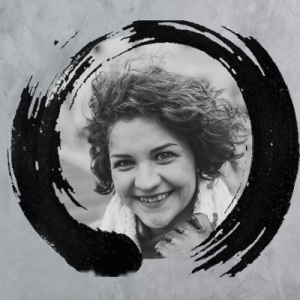Many dancers have asked me where I find the time to think about the patterns that I lead; especially given the speed that I can lead. The answer is that I do not think about what moves I will lead next but use Opportunistic Leading. This blog describes the concept of Opportunistic Leading, why I prefer this and what this means for my dancing.
This is part three (of five) regarding how I lead in Salsa. My two previous articles can be read here:
Note: This series is about sharing my personal philosophy of leading in Salsa and though this is not for everyone I hope you will find this insightful.
Learning to Lead
When leaders start their journey in Salsa they learn what seems like endless potential patterns. Teachers try to give a lot of material in the form of long routines consisting of different moves stitched together.
Initially, most leaders will attempt to repeat the whole sequence of moves (learned in class) on the dance floor. As you mature and start developing awareness and your own taste you start selectively taking and mastering individual moves; I often tell students that if they pick up and master one move per class then that is a fantastic result.
While learning to lead in this way is common and effective I believe that the real purposes of these classes are lost; learning to lead moves should be a gateway to learning how to inform your follower of your ideas about dance and not just a memorised series of impulses and reactions.
Note: I feel that trying to repeat and master endless lengthy patterns is a catalyst for destroying one’s musicality. Rarely will class routines fit the ebb and flow of music and since most dancers power through regardless the dancers are training themselves to disregard the music i.e. training themselves to use music as a metronome.
Opportunistic Leading
Most dancers move towards Opportunistic Leading (to various extents) after a few years but I will try to offer a definition of what opportunistic leading is:
Opportunistic Leading is a way of leading such that your next move is based on your position (relative to your partner), your current connection (to your partner) and the flow of the music. Opportunistic Leading allows you to be spontaneously as well as freeing your mind to appreciate music as opposed to thinking about moves.
Now that we have a definition let us talk about the three main components:
- Relative Position – One of the most important and unappreciated aspects of quality leading in Salsa is your positioning. The quality of positioning is overlooked in favour of hand movements or leading impulses; in my observations bad positioning often causes the leader to compensate with a stronger lead. In Opportunistic Leading positioning has a massive impact on my options for leading my partner. If I am in a Crossbody Open Position (off the line of the dance and perpendicular to my partner) then at that moment I have several opportunities. I can choose to lead my partner across the line, or maybe not, if I do decide to lead her across the line I will also have several options.
- Connection Types – The connection to my partner at any given time will have a massive impact on what I can lead next; having a hand-to-hand connection is very different to a hand-to-shoulder or a hand-to-waist connection. Each type of connection has different properties which can be explored while learning various partner work combinations. For example, if I have my partner in a hand-to-hand connection I could easily use the arms to leverage a spin in my partner’s body or if I have a hand-to-shoulder connection I might want to keep her still and do some body isolations. The position and the connection at any point in time will have a massive impact on what I could potentially lead.
- Music – I like to think that I listen to and respond to the music. Given my relative position and current connection, I will have several options. The flow of the music will be the determining factor as to what is led. For example, if I am in a Crossbody open position with a hand-to-hand connection and I hear a twirling sound in the music I might go for leading my partner with some turns. If I feel that the music is coming to a break in the music I might stop her with a block and then hold her steady.
Benefits of Opportunistic Leading
By being an Opportunistic Leader I am allowing myself to be free from thinking about moves which are what a lot of new dancers tell me they want to rid themselves of. Instead, I can enjoy the music, give more attention to my partner and co-create a unique dance experience.
As my moves are not predetermined I very often surprise myself with what comes next and often surprise my partner as well. The current format for teaching leaders tends to create a hoarder mentality and the dreaded “bored of my moves” syndrome.
As I am not planning my next moves I am more observant of my partner and therefore more adaptable to change. I have often heard dancers complaining about their followers not allowing them to complete their routines, however, I believe that if my partner is feeling or hearing something great in the music I want in on the action. Being an opportunistic leader allows me to learn a lot from my followers.
Summary
Opportunistic Leading is not for everyone but I believe it is one of the key factors in how I lead in Salsa. For me, the benefits are great but require cultured fundamentals and a strong understanding of positioning, connection types and music.
As stated at the start of the article a lot of experienced dancers are opportunistic dancers which allows for greater freedom and variety in their dancing as well as the ability to surprise themselves. I also believe that becoming an opportunistic leader is essential for your longevity in Salsa as without this you will soon get bored.
I hope this article gave you all some food for thought. I would love to know your thoughts so please leave me your comments on Facebook or below.





Hi Toan, Really great post and I wish more leaders would do this in modern jive where I now focus my dance. It’s hard to do – I know I struggle on the musical aspect of it when leading (mainly because I rarely lead so am reliant on remembering single moves to put them together), but there’s a lot of leaders who just dance the same moves to every track (having had 6 years out of dance, I’m still finding them doing the same moves!
Will be sharing on my page because it’s easily transferable to modern jive.